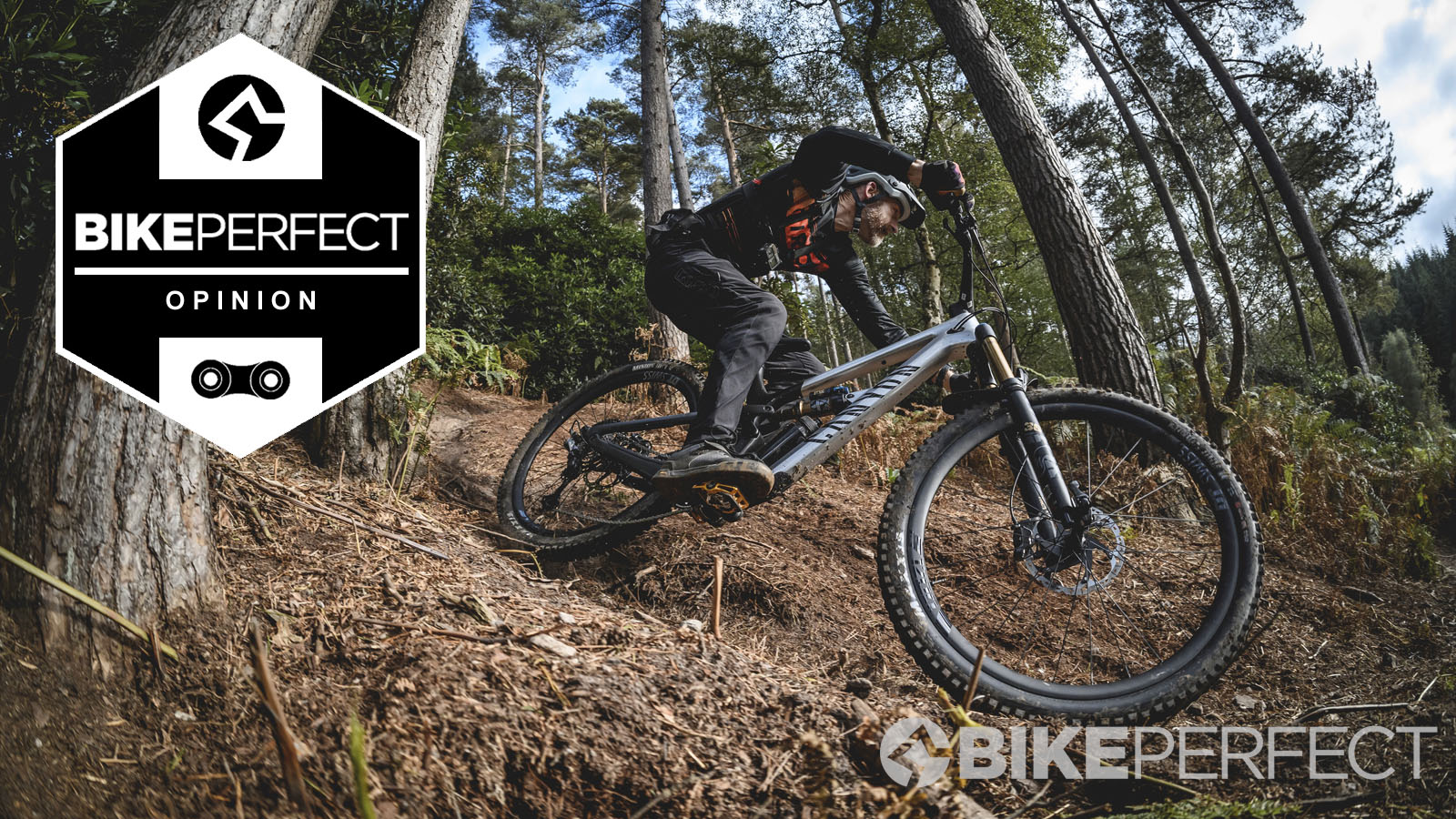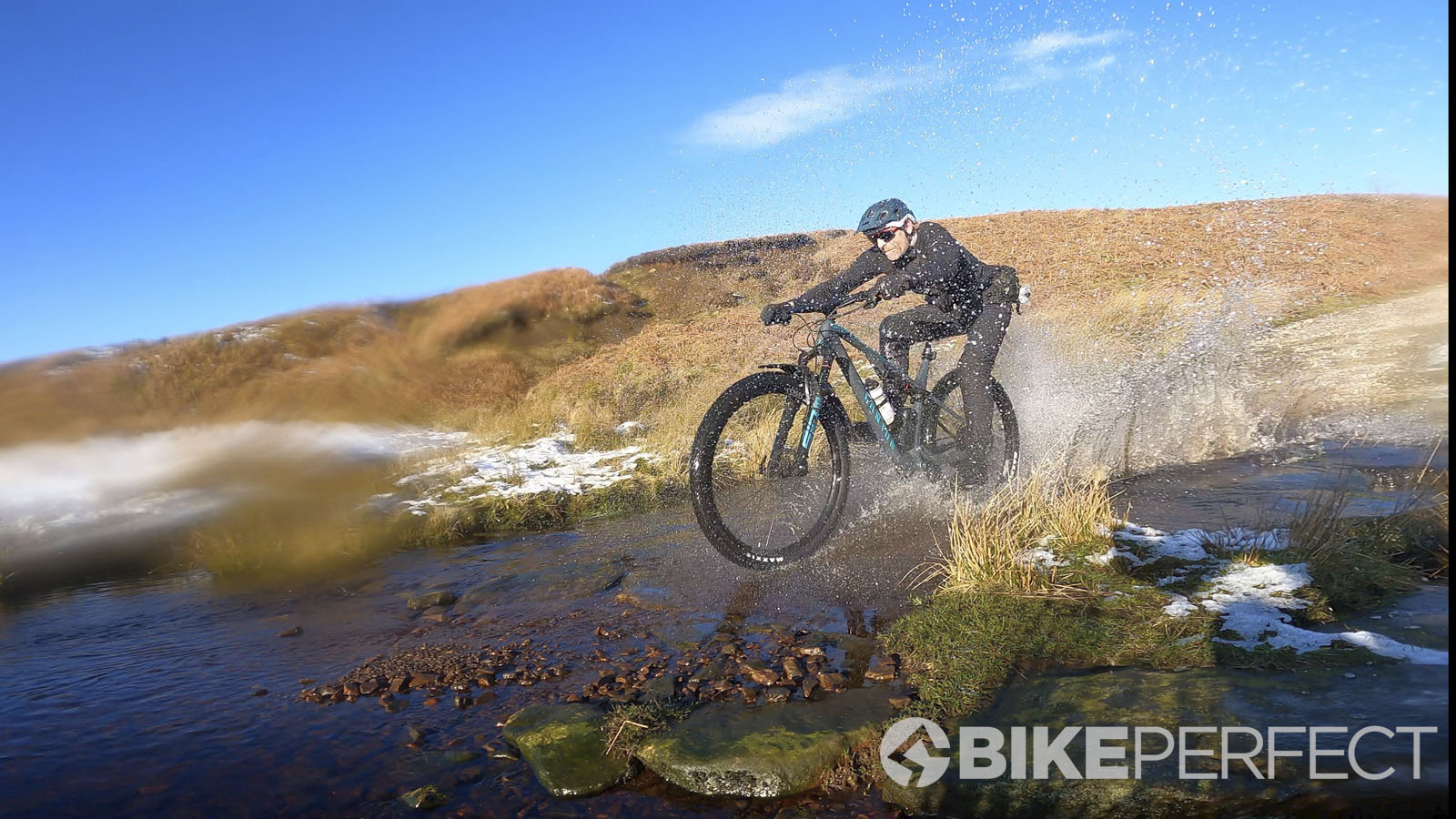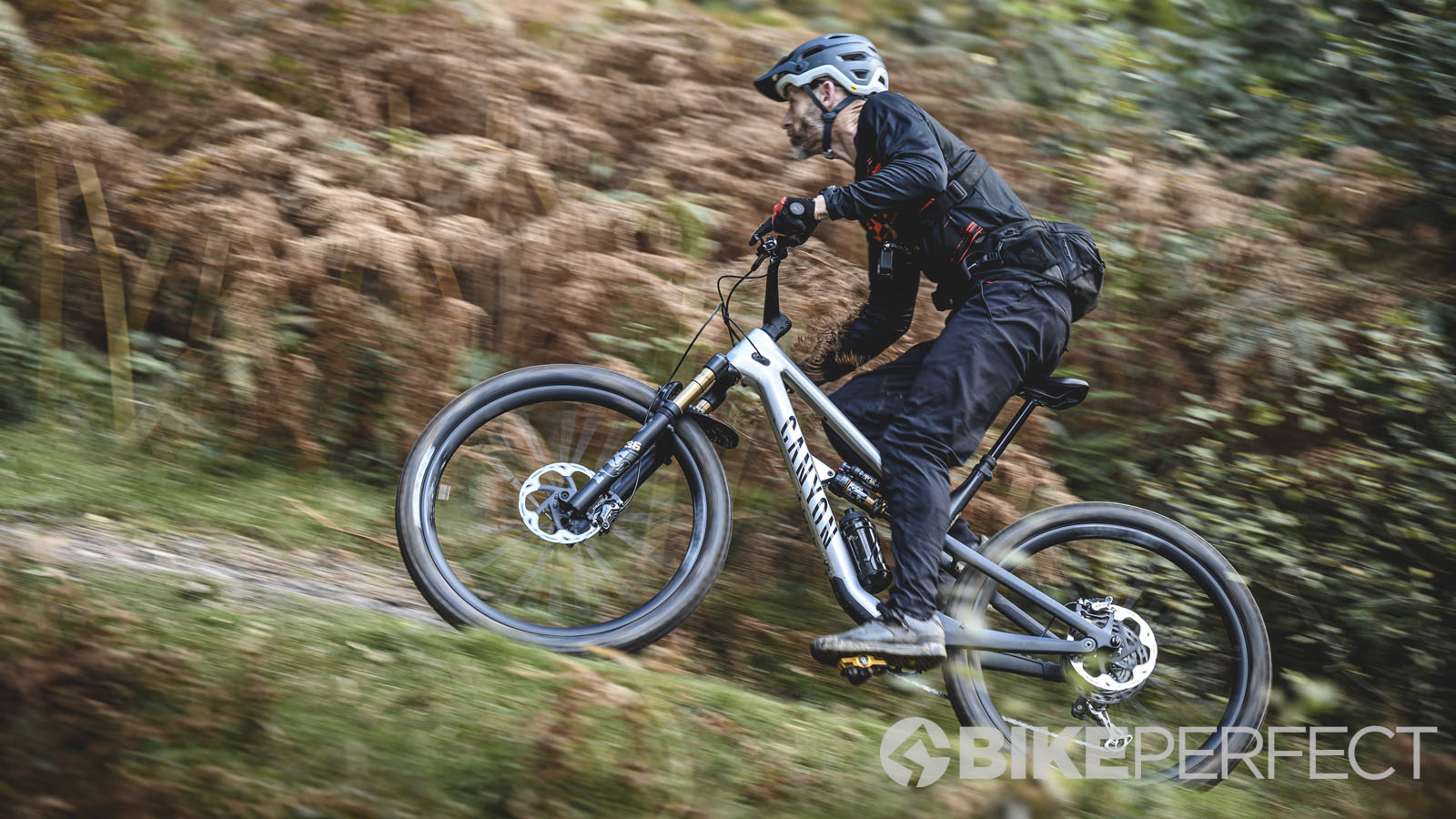Bespoken Word: Where does the trail end?
Guy Kesteven wonders if it’s time to recategorize mountain bikes, or maybe we need to recategorize ourselves?

This conversation has been brewing for a long time, but it’s risen to the surface after a couple of social media-triggered discussions about where mountain bikes are heading, and whether the names we generally use work for them anymore.
Obviously what you call a bike doesn’t affect how it performs at all, but I’m getting more and more questions about whether a bike is capable enough to do a specific sort of riding. They’re generally from people worried whether a bike can hack a more testing challenge. That’s not least because in some media there seems to be a trend towards demanding heavier and heavier duty kit for ‘trail bikes’ and — frankly — I think it’s got a bit daft if you’re saying even the best trail bikes you test should come with a downhill casing rear tire or a 38mm legged fork. Or is it me who’s out of touch with what most people think of trail mountain biking?

To put things into perspective, I’ve been riding since before there were suspension forks, and you prepped for a downhill race by taking the bar ends off your handlebars and letting a few psi out of your 2.1in tires. I remember getting my first set of reinforced white wall Panaracer Magic DH tires and lusting after a set of red RockShox Judy DH forks with a whopping 80mm of travel, but to be honest the whole gravity business was getting a bit extreme for me by that point.
Or so I thought. But then last Thursday I was plowing down twisty, steep drops and occasional send trails I’d never ridden before. The Stumpjumper Evo I was on ‘only’ had 150mm of travel but even in the default setting the head angle is 64.5 degrees, and with the supplied headset cups it can go as slack as 63 degrees. That’s DH bike geometry. It’s sticking that crazily assured, rock steady control to the trail with a reinforced tire that went through 17 different compound changes in development to get the super slow rebound rubber just right. Even at under 20psi I’m not overly worried about plowing through rocks on the 30mm wide rims, and whatever I’m launching into in the dark, I doubt it’ll trouble it when I land. The bars are obviously 800mm to make the most of things too and the oversized brake rotors have enough siege catapult power to throw a rotten cow over a castle wall.
Basically unless I do something REALLY dumb — and I know this because I did some pretty dumb and clumsy stuff, and it couldn’t have cared less — I’m sat perfectly centered in an unstoppable juggernaut that’s way ahead of me in terms of staying calm and being brave. Because this is the entry-level alloy version, it weighs over 16kg before I even add pedals. On the plus side, it means that planted geometry is locked onto the ground with some serious gravity. However, it also means when I accidentally T-bone a turn or hit a boggy section, it’s a hell of a heave to get it going again.

Blurred lines
So how is something that feels so like a downhill bike overkill classified as a trail bike? Well, that’s because when you point it back uphill to get to the next fun section, it actually pedals fine. I mean, it needs some horsepower, but it doesn’t suck any hope of seeing the top of the hill out of you in the first few meters. Plus like most brands, Specialized not only has a dedicated ‘Demo’ downhill range with 200mm of travel, but also the Enduro with 170mm of travel. And guess what, that’s in the ‘trail’ category on its website too, because again it pedals better than it has any right to.
But then you look at the other end of the ‘trail’ category and you’ve got a whole load of cross-country bikes with a longer fork stroke, maybe a different linkage to boost rear travel and slacker, longer geometry translated onto the trail through fatter tires and rims. And while some of them behave like a sheep in wolf's clothing, most of these bikes are fully ready to go hard into terrain I think twice about and come out having nailed the techy lines on 35mm-legged forks and 2.4in tires, and with nothing broken despite that unexpected drop or sickening back wheel boulder slam halfway down. Yet when you turn these bikes back uphill, stall on the singletrack, or have to muscle through tech when momentum is long gone, their weight advantage makes things a whole lot easier. Especially if you’ve got the money to make the 1.5-2kg gap at the bottom end of pricing grow to 4-5kg when you get carbon on the menu. So surely if these are bikes that are great fun to ride uphill and along, but handle anything I’ve got the nerve to attack, then these are nearer the definition of a balanced trail bike?

But this ‘downcountry’ classification risks obscuring just how capable ‘pure’ race bikes are now. That’s because the XCO courses of today look like Enduro and DH courses did not long ago. And while a 32mm-legged fork will definitely get twitchy compared to a 120mm-travel 34/35mm-legged fork, and road bike-based brakes won’t help when you’ve got a short travel dropper up your twitching butthole on a steep descent, the control you can expect is still several levels above where it was just a few years ago. Those travel and girth compromises liberate a significant amount of grams at every price point too, so if your definition of a trail ride is heading out into the hills for several hours, having fun on the singletrack, minimizing climbing time but still being able to boss descents better than you used to, then a pure cross-country mountain bike is more than fine, it’s actually perfect. In fact of the three pure race bikes I tested last year — Merida Ninety-Six, Scott Spark RC and Santa Cruz Blur — I said in every write up that people shouldn’t automatically gravitate towards the heavier, slower ‘trail’ versions because the lightweight, hyper-fast versions were amazingly capable already.
Old definitely isn't gold
But looping back to what got me started talking — a post by ex journo and now Merida media mogul, Jon Woodhouse, showing him truing his first wheel in seven years — it seems like there’s a real feeling that bikes aren’t tough enough at the moment. But if I hadn’t dinged a rim the other week after burping a slowly leaking tire, I wouldn’t have smashed a wheel in a couple of years and it’s even longer since I last bent a frame slap landing a short travel steel bike into an upslope. And if you’ve got any history in the sport you’ll realize how much things have shifted recently in nearly every aspect. To the point where I was laughing online with long-time endurance legend, Matt Page, last night about how tires we used to call ‘trail rubber’ are now being used on gravel bikes. And with suspension forks and dropper posts now being matched to drop bars, they’re genuinely much more capable than the average mountain bike from when I started.

So the idea of using treacle rubber tires nudging the 1.5kg mark, or needing 170mm of suspension travel as my riding ‘safe space’ is not really somewhere I want to be. The one complaint about Canyon’s Spectral CFR I tested a couple of months ago was that while it had pulled 300g out of the frame with fancy fiber, it had still fitted the tire equivalent of wellies, so you couldn’t really tell in terms of pop. I can’t help but wince, thinking of the wasted watts when I see people in forums recommending 2.5in aggro tires as their ‘go-to’ for local bridleway loops either. Because unless you’re a hefty rider, sending big jumps or plowing through rock gardens over and over again, possibly on an e-bike, that sort of equipment is almost certainly overkill for the riding you’re really doing.
But then projecting the image of extreme is what’s sold mountain biking since the very start and online polls and actual sales of shops and brands I talk to continually confirm that ‘rad’ is where the revenue is at. And if that’s what gets more people into riding and means fewer injuries and less broken kit, then does it really matter what tags we attach to it?

Guy Kesteven has been working on Bike Perfect since its launch in 2019. He started writing and testing for bike mags in 1996. Since then he’s written several million words about several thousand test bikes and a ridiculous amount of riding gear. He’s also penned a handful of bike-related books and he reviews MTBs over on YouTube.
Current rides: Cervelo ZFS-5, Specialized Chisel, custom Nicolai enduro tandem, Landescape/Swallow custom gravel tandem
Height: 180cm
Weight: 69kg
